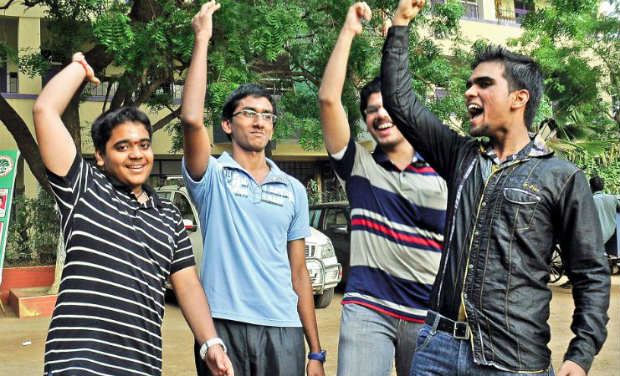
Chennai boy tops JEE in Tamil Nadu; girls shine


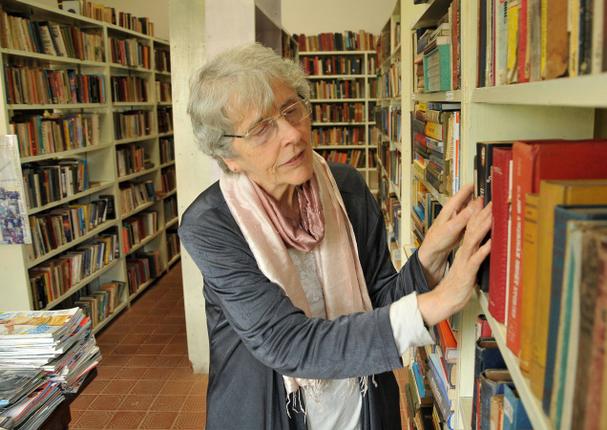
“Kodi was like a health resort then,” says Margaret Sekhran about Kodaikanal of 1965.
She remembers the peace and mist all around, the pleasure she derived walking around the lake where a handful of people sat and played the flute.
“That charm of the hill station is gone today”, she rues. Now, there are more people, more buildings, more vehicles, more noise, more garbage and pollution.
But there is one nook in the hill town that still brightens up the 77-year-old’s face. It is the Kodaikanal Missionaries Union (KMU) Library housed inside the Kodaikanal International School (KIS) campus.
The library is 123 years old and Margaret’s association with the heritage hotspot is 46 years old. She first visited and used the library in 1967. In 1978 she became its honorary member and ever since has been “helping the library in every possible way.”
Life for Margaret has come full circle. When she was a child, her father built a library in a van and took it around Derbyshire. “It was a storehouse of classics,” she recalls.
Today, Margaret as a Trustee of the KMU library takes care of its priceless collection of 7,000-plus books.
“We still have some old valuable books from 1890,” Margaret finds it hard to contain her excitement as she shows me around the tiny little room neatly stacked with rows of shelves filled with books.
“A good library,” she smiles, “will never be neat” and pulls out copies of The Bible in French, Spanish and Hebrew, a beautifully illustrated book on Paris…all from the previous century.
“Most of our books have been donated by missionaries, past and present members, visitors and the KIS. We buy them occasionally, our collection includes a wide genre of books,” she says.
Fond of reading, Margaret has added the “India section” with lots of books on leaders of freedom movement and biographies of several unusual people. She also introduced the “talking” concept where members assemble for two hours twice a week (Wednesdays and Saturdays) to discuss old and new books and for a friendly exchange of opinions.
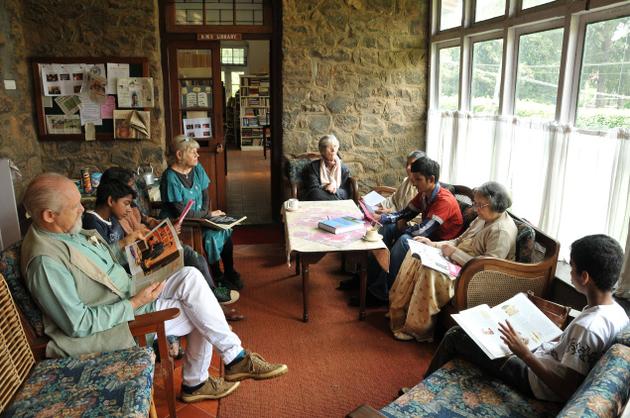
“Our members are spread across the country,” says Margaret, “and many times even if they are on a holiday or official visit to Kodi, they drop in for these chat sessions.” Many people also bring along friends who become members. “I also want all the new people coming and settling in Kodi to join us,” she says. Margaret is also particular about encouraging reading habit among children and always requests her members to come with their families to the library.
For Margaret it has been an enjoyable experience to see the group of library members develop into a core group of ‘regulars’ with others dropping in and out from time to time. The annual fee of Rs.100 remains static to make it affordable.
“By doing this work,” says she, “I feel I am offering a service.” “It is my endeavour to ensure that every book, old or new, damaged or voluminous, is of use and is not destroyed,” she adds.
At present Margaret is busy cataloguing the library. “It’s a hands-on work and I do it with whoever is willing to volunteer.” She feels it is necessary to make the historic KMU library representative of what it is, who the members are and what are the benefits. “We have three well known novelists as members,” she gushes, “and it is the wonderful individuals who provide the personality of our group.”
The KMU was formed in 1890 to enable missionaries of the various denominations to come together for recreation and to develop mission strategy and outreach in cooperation with each other.
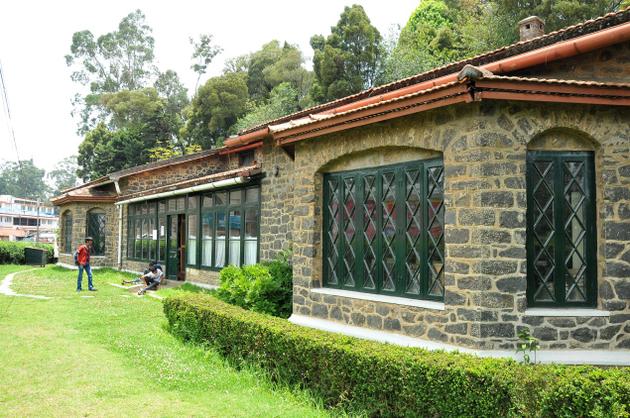
In 1923 an Edwardian style clubhouse was built with a large central hall for social events and afternoon teas, tennis courts, a reading and other meeting rooms. With the decline of missionary activity in India, the KMU was wound up in the 1980s, and the property was turned over to KIS. The KMU library, maintained by the KIS, continued to function from the single room and has become something of a social venue over the years. “It is perhaps the most influential club throughout Kodai’s history,” beams Margaret, a social worker who came to India post-marriage in 1962. Before the KMU Library grabbed her, Margaret started the Ladies Circle in Chennai in 1970 and did lot of voluntary work with refugees and children of slum dwellers. After coming to Kodaikanal, she launched herself on a self-assigned mission of planting shoal trees.
To know the past through books kept returning her to the library. “A library just has to provide,” she says, “it need not be big or beautiful, with more staff or users.”
It is Margaret’s desire to keep adding books to the library’s present volumes. Aware of technology taking over and more people reading online, she says, “I hope physical books will continue to stay for a long time.”
“Library is more than a repository of books,” Margaret describes, “it is a gathering place for people because they interact with each other.” Whether she is interacting with the young or old, regular or new visitors in the library or her pet Dalmatians and the hundreds of birds, trees, butterflies and flowers at home, it is them who make her life interesting.
“If you have a library and a garden, what else you need in life?” she asks. In her opinion both are wondrous places with the power to change lives and help you to look forward.
“They are the future,” she smiles, praying that the KMU library remains one such indispensable spots in Kodi always having what people need.
source: http://www.thehindu.com / The Hindu / Home> Features> MetroPlus / by Soma Basu / Madurai – July 04th, 2013

Mumbai :
Alisha Abdullah is India’s only woman super bike racer and the fastest Indian car racer. With racing in her genes (her father RA Abdullah was a famous bike racer and seven-time national champion), Alisha is someone who gives the guys a run for their money. CS catches up with this feisty young lady who is all set for a tournament to be held in Hyderabad next weekend:
Who: Alisha Abdullah
What: Talking about her life as a racer
In prep mode
We had a race at Coimbatore two weeks back. I finished seventh out of 25 guys, which was pretty decent. In racing, you cannot be training with your bike/car throughout the year. It is very expensive. What you need to ensure whether your bike/car is at par with those of the others in terms of technology and mechanism. I do a lot of physical training in the gym to improve on my stamina, core strength, lower back and neck areas. The sport is too much for a girl to handle physically, so I need to workout really hard.
Daddy’s little girl
My interest in racing started when I was eight years old. My dad was a racer too and I was fascinated by the machine, speed, action, etc. I used to love it when he put on his suit. My dad got me a small bike as well. Later on, I tried my hand at go-karting and did very well. Slowly, racing developed into a passion. Finally, when my dad gifted me a 600 cc superbike on my 18th birthday, I knew that motorsports was my vocation.
Feminine side
Though people might think of me as this girl with a rock chic fashion sense like boots, leather jackets, denims, et all, I am not at all tomboyish off the track. I love wearing pretty dresses for evening events with jewellery as well. In fact, people get a surprise when they come to know that I am Alisha, the super biker (laughs out loud).
My inspiration
My dad has been my biggest supporter throughout. I have seen the kind of hard work and sacrifices he has made in his career. I am a huge fan of Virat Kohli. I love attitude and focus on his game. He doesn’t give a damn to what people say about him. I think that’s the greatest quality in a sportsman.
source: http://www.sports.ndtv.com / Home> Sports Home> Other Sports> More / by mid-day.com / Monday – July 08th, 2013
Kannerimukku is where John Sullivan fell in love with the hills and discovered Ooty, writes SUBHA J RAO
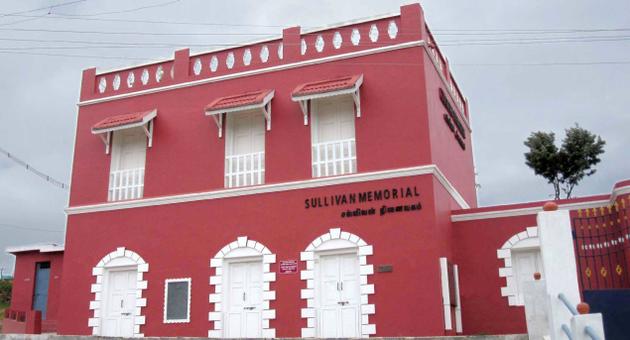
January 8, 1819, Dimbatty Valley. Sitting in a valley kissed by the clouds, Collector of Coimbatore, John Sullivan, 31, wrote to Sir Thomas Munro, Governor of Madras: “My dear Colonel, I have been in the Highlands for the last week. This is the finest country… it resembles I suppose Switzerland more than any other part of Europe… it freezes here every night, this morning we found ice in our Water chatties (clay pots).”
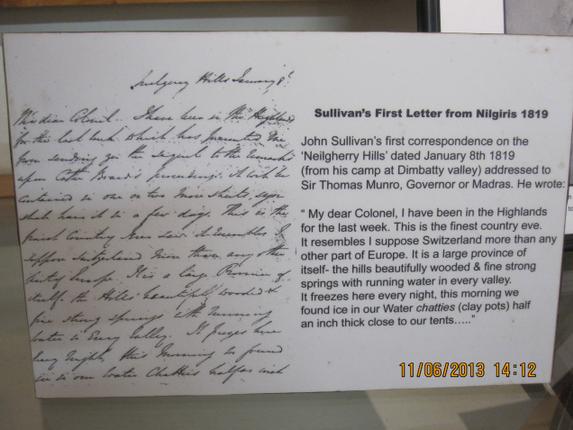
Nearly two centuries later, the valley still retains part of the charm that captivated Sullivan, who went on to found Ooty, the first hill station in India. On a wet June afternoon, the tea plantations and vegetable patches shimmer a bright green. In a way, they are a tribute to Sullivan. For, it was he who introduced European fruit trees, vegetables and flowers to the hills and suggested that the British cultivate tea there.
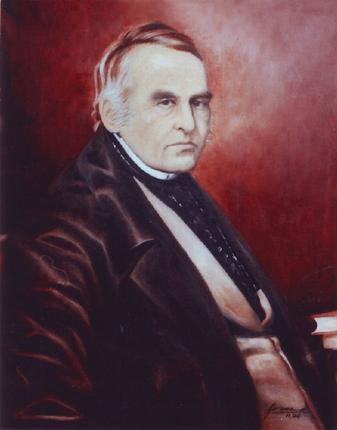
When he first trekked up the Neilgherry (as the Nilgiris were then known) with a contingent of soldiers, elephants and ponies (who were disbanded halfway), it was through dense shola-filled forests and steep cliffs. During his second visit to Dimbatty (which means soft, pillow like) valley, Sullivan set up a camp. Later, it became a two-storey structure called Pethakal bungalow, named after a sacred stone that existed there. Sullivan lived there till 1823. In the five-acre property, he experimented with cultivation of potato and other English vegetables such as cabbage, beetroot and carrot. In the 1820s, the spud finally made its appearance in Ooty.
Today, the area is called Kannerimukku. You drive past winding roads, mist-soaked mountains, tea factories and tiled houses to reach the memorial, resplendent in brick red against a sea of green. When Dharmalingam Venugopal, director of the John Sullivan Memorial and Nilgiri History Museum (now housed in the Memorial), first saw it, it was crumbling, a pale shadow of the edifice it once was. In the years leading to its ruin, it was ironically used to store hay and the very potato that Sullivan introduced!
Today, with Government funds (the Hill Area Development Programme) and private donations, it stands two-storeys tall; the rooms hold a treasure trove of material about Sullivan and his family, the role of the British in the Nilgiris and the traditions of the local tribes.
There’s an original pencil sketch of John Sullivan, drawn when he was a lad of 15, before he set out for India. It was donated by historian and writer, David Sullivan, his great great-grandson.
There are also some exhibits collected by Venugopal that show you what life in the hills used to be like. A Badaga wooden food plate polished with use, hunting tools of local tribes, the bugiri, a cane flute used by communities in the Nilgiris, photographs of the local tribes by the self-taught Philo Hiruthayanath….
The section on the modes of communication and transportation in the hills is an eye-opener. The Nilgiris had six entry points (Sispara Ghat, Mulli, Gudalur, Sigur, Coonoor and Kotagiri) at a time when most hill stations had two. Today, five remain open; the original Sispara Ghat that connected it to Calicut has been closed. And, how did people travel? By foot, horseback, palanquin and tonga.
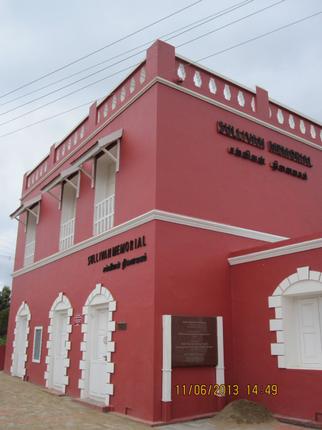
Though the Memorial is located just two km off Kotagiri, this is not a road regular tourists tread. But, there’s every reason why they should. Because, this is where it all began, years ago on a cold January day.
(June 15 marks John Sullivan’s 225th birth anniversary. The Nilgiri Documentation Centre, which works out of Sullivan Memorial, organises a two-day trek on June 15 and 16 to retrace the Sullivan trail.)
Getting there
Drive up to Kotagiri, about 75 km from Coimbatore. Take the road leading to Ooty. The memorial is two km from Kotagiri, past Ramchand Square and Kotagiri Medical Fellowship.
What to do
Read the well-documented panels at the memorial (http://www.sullivanmemorial.org/) that throw the spotlight on the making of a hill station.
Browse through the books on the Nilgiris that Venugopal has collected.
Visit the Ooty lake, created by Sullivan, and Stonehouse, where he lived. It now houses the Government Arts College. Plan a trip to St. Stephen’s Church, Ooty, where Sullivan’s wife Henrietta and eldest daughter Harriet are buried.
Where to stay
Kotagiri has many good hotels and homestays. Else, stay in Ooty (32 km) and drive down to the Memorial on your way back to the plains.
source: http://www.thehindu.com / The Hindu / Home> Feature> MetroPlus> Travel / by Subha J Rao / June 13th, 2013
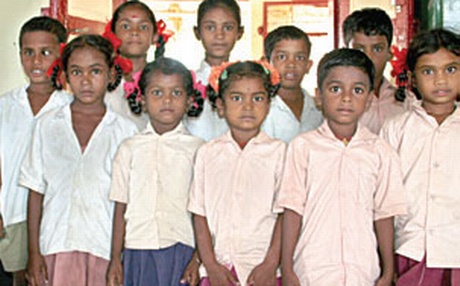
Customs followed in India’s villages range from the mundane to the strange to the bizarre but one village in Virudhunagar district has been following a unique practice, which even applies to both genders. For nearly 10 generations, residents of Valayapatti village have been naming their firstborn child, irrespective of gender, ‘Kuttiyan’ or giving any name that starts with ‘Kutti’ in honour of their ancestral deity Sakthi.
Currently, there are around 50 people whose name starts with Kutti living in Valayapatti. While earlier there used to be many Kuttiyans in the village, in recent times, the need to avoid confusion and complications associated with certificates, villagers have preferred to use Kutti as a prefix. There are currently around eight children at the Kannappar Hindu Primary School, a government-aided institution at Valayapatti, who are named Kutti Priya, Chinna Kutiyan and so on, while the school’s headmaster is, you guessed it- Kuttiyan!
One among the many other Kuttiyans says that there are about 60 houses in the village. Kuttiyan explained that their ancestors, who were cowherds, had migrated from a village called Mavoothu near the Mahalingam temple in Virudhunagar. Another Kuttiyan said that the people carried over the worship of Sakthi from their ancestral village, where there is a temple to the deity as well.
“About 10 generations ago, three of our ancestors- Periyasamy, Ponmalan and Podukalam- went hunting and caught a deer. It is believed that when they were cooking its venison in three different vessels, they found elephant calves in one vessel, baby snakes in the second and baby deer in the third vessel,” Kuttiyan explained adding that his ancestors attributed this as a miracle by Sakthi. He claimed that the custom of naming the firstborn child Kuttiyan began since then.
T Dharmaraj, the head of the folklore department at Madurai Kamaraj University said that the residents of Valayapatti belong to the Moopar community, a tribal group.
“It appears that the custom of naming children as Kuttiyan started as some ancestor of the villagers may have killed a cub or pregnant animal and named their first child as Kuttiyan out of a guilty conscience,” said Dharmaraj.
source: http://www.newindianexpress.com / The New Indian Express / Home> States> Tamil Nadu / by Kaushik Kannan – Virudhunagar / June 27th, 2013
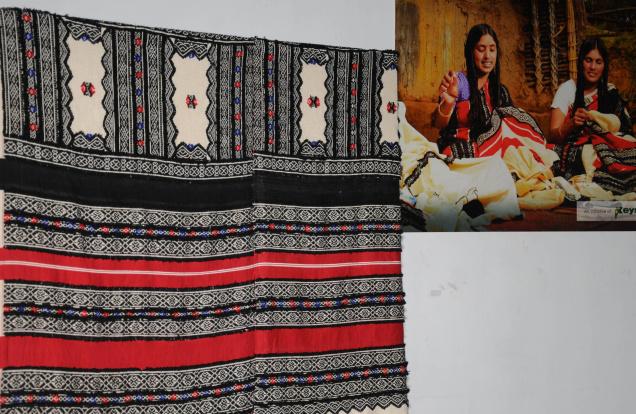
Toda tribal representatives on Thursday formally received a Geographical Indication certificate for their unique embroidery, which is known for its striking colours. District Collector Archana Patnaik handed over the certificate to the representatives at a function held here. The GI status was given in March by Chaitanya Prasad, Registrar of Geographical Indications. The recognition came after five years of effort by Toda Nalavaazhvu Sangham, Key Stone Foundation and Poompuhar (Tamil Nadu Handicrafts Development Corporation).
The status not only ensures uniform pricing for Toda embroidery products but also insulates the art from being duplicated.
Of the nearly 1,600 tribal people in nearly 69 hamlets, a little more than 400 are said to be actively involved in embroidery. The product range has now widened from Pootkhulu (shawl) to wall hangings, table mat, shoulder bags and gents and ladies shopping bag.
GI is a name or a sign used on prized goods to indicate their specific geographical location or origin, says Mathew John, trustee, Keystone Foundation. The three organisations are the Registered Proprietors of the GI.
The art of Toda embroidery, known as ‘pukhoor,’ has been passed on to generations. Organisations such as the Tribal Cooperative Marketing Development Federation of India have been facilitating training programmes.
The function was attended by Pratim Roy – director of Key Stone Foundation, Jailani of Win Lexis that supported the initiative for GI status, Prasanth from the Registry of Geographical Indications, Prem Kumar – Marketing Manager of Poompuhar, Geetha Srinivasan of INTACH, Dr. Tarun Chabra, patron of tribal community, and Kottradu Kuttan – Head of Toda Nalavaazhvu Sangham.
source: http://www.thehindu.com / The Hindu / Home> News> National> Tamil Nadu / by Special Correspondent / Udhagamandalam – June 14th, 2013
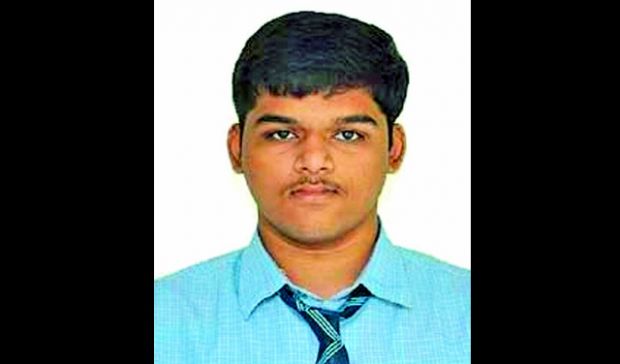
Chennai:
It was a memorable day for S. Abhinesh from Dindigul who scored 200 out of 200 cut off marks in both engineering and medical counselling this year. Directorate of medical education and Anna University, which conduct counselling for medical and engineering streams, released rank list for government quota’s single window counselling on Wednesday.
A total of 11 students secured 200 out of 200 cut off marks in engineering whereas seven secured top marks in medical stream. The cut off mark has come down by 0.25 to 0.50 marks in engineering and 0.25 in medical this year. Admission to top medical and engineering colleges is expected to be stiff this year with several students securing the same cut off marks.
About 26,348 state board students and 850 candidates from the CBSE stream have applied for 2,903 seats in medical colleges in the state this year. In the engineering stream, 1.89 lakh students had applied for 1.97 lakh seats.
General counselling for medical stream will start on June 19 and engineering aspirants will sit for counselling on June 21. The state will add an additional 285 seats in medical colleges after it receives an official communication from the Medical Council of India (MCI).
As far as engineering colleges are concerned the All India Council for Technical Education (AICTE) has approved 11 new engineering colleges in the state, which will add over 3,000 seats to the seat matrix.
source: http://www.deccanchronicle.com / Deccan Chronicle / Home> News> Current Affairs / DC / June 13th, 2013
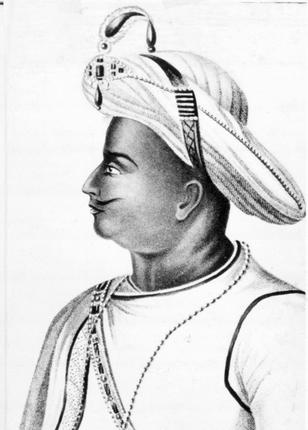
Though the father-son duo Hyder Ali and Tipu Sultan, in whose memory the Chief Minister of Tamil Nadu, Jayalalithaa, has announced construction of a mani mandapam in Dindigul, were the rulers of Mysore, they had close links to Tamil Nadu, fighting and winning several battles across the State.
Their association with Tamil Nadu could be gauged from naming of Tipu Sultan after Hazrath Tipu Mastan Aulia, a renowned Sufi saint, whose tomb is in Arcot town, Vellore district. When Hyder Ali and Fakhr-un-Nisa did not have children for many years, the couple visited the tomb of Tipu Mastan Aulia frequently to pray for a child.
The Sufi saint assured that the Almighty would bless them with sons, provided they came forward to deliver the first born to God’s service. Though they agreed to do so, the couple did not keep their promise as Tipu Sultan turned a warrior at the age of 15.
Hyder Ali had even selected Raushan Begum, daughter of Imam Saheb Bakshi of Arcot, Vellore district, as the worthy bride of Tipu Sultan. Raushan Begum was one of the three wives of Tipu Sultan.
Of all the places where they fought battles against the British forces and camped in the state, it was in Dindigul where both Hyder Ali and Tipu Sultan stayed for many years. The Mysore ruler posted Hyder Ali as the commandant of Dindigul, in recognition of the pivotal role that he played in many battles. The main task given to Hyder Ali at Dindigul was to put an end to the menace of the refractory elements and he accomplished the job effectively.
Thanks to the special initiatives taken by Hyder Ali, the volume of tax collection rose remarkably. He gave a portion of the collection towards the construction and renovation of temples and mosques and also allotted considerable share for starting factories with the help of French engineers in the town. Soon he won the hearts of the people in Dindigul and the entire society extended unstinted support to his endeavours.
The most famous historical landmark of Dindigul is the Rock Fort, which is located atop a hill. King Muthukrishna Naicker of Madurai constructed the Fort. In 1755, Hyder Ali, his wife and son Tipu Sultan came to Dindigul. Tipu Sultan ruled the fort from 1784 to 1790. The English defeated Tipu Sultan in the Mysore War of 1790, and annexed the Fort.
It was at a mosque in Dindigul, constructed by Hyder Ali, that the body of his younger sister Ameerunnisa Begum was buried. The Begumpur mosque was named after her.
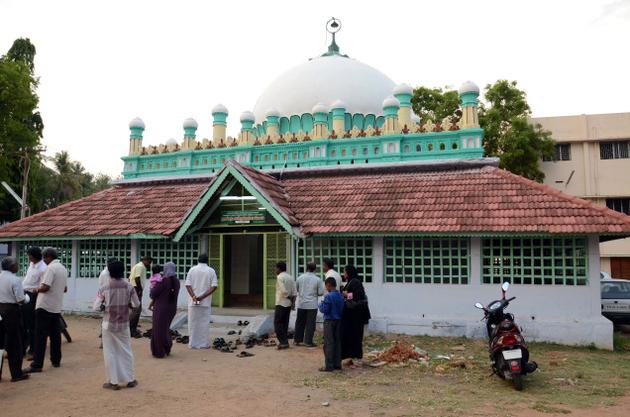
Battle against the British
The battles that Hyder Ali and Tipu Sultan fought included those at Arcot, Ambur, Cuddalore, Porto Novo (Parangipettai), Thanjavur, Erode, Dharapuram, Tiruppattur, Vaniyambadi, Sholingur, Vandavasi and Kanchipuram. In a majority of these battles, the English force could not match the speed of Tipu’s cavalry. In the battles that took place in Tiruppattur and Vaniyambadi, the father and his brave son fought side by side, which helped them capture both the Forts with much ease.
In some of the battles, Tipu Sultan used war rocket. This earned him universal fame as ‘innovator of the world’s first war rocket.’ It was his victories against the British forces that ranked Tipu Sultan among the few Indian rulers who have defeated the British.
One of the wars involving Tipu Sultan, which badly affected the local economy, was the battle held at Annagudi near Thanjavur in 1782. It took a few decades for the administrators to restore the devastated economy and that period was named as the ‘Era of Hyder Ali’ (Hyder Kaalam) in history. After Tipu Sultan was killed, the British shifted his family members to Vellore,where they were interred.
source: http://www.thehindu.com / The Hindu / Home> Features> Friday Review> History & Culture / by Syed Muthahar Saqaf / June 13th, 2013
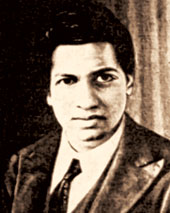
Chennai :
The grandson of southern acting legends Gemini Ganesan and Savitri will play math genius Srinivasa Ramanujan in a film being shot in Tamil and English.
Abhinay Vaddi, whose mother Vijaya is the daughter of Gemini Ganesan and Savitri, will star as the young mathematician in the film that traces his life from his native Kumbakonam, 400km from here, to Chennai and then to Cambridge before his premature death from pneumonia.
“It is an honour to portray an icon like Ramanujan. At the same time, there is considerable pressure that I must do it right. Then there is the added expectation because of my lineage,” said Abhinay, 29, a former international table tennis player.
The film is being directed by retired IAS officer Gnana Rajasekaran, who has two biopics — Bharati and Periyar — to his credit.
Abhinay said he had little to fall back on when it came to Ramanujan’s physical appearance as only three good photographs were available. “None of us knew how he walked or spoke, so I was coached by the director on how Iyengar Tamil was spoken in those times. Being a Telugu, mastering the dialect was difficult,” recalled Abhinay, who has one Telugu and one Tamil film to his credit.
The first schedule of the film at Kumbakonam is complete, and the story now shifts to Chennai. London-based theatre actor Kevin McGowan plays Professor Hardy, the man who discovered Ramanujan’s genius and relayed it to the world.
Sindhu Rajasekaran, one of the co-producers and Rajasekaran’s daughter, said the director believed in showcasing the lives of real-life heroes.
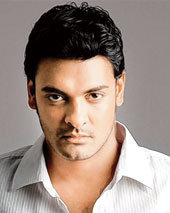
“When Camphor Productions, promoted by my husband Sushant Desai, Srivatsan Nandathur and Sharanyan Nadathur, wanted to produce a good film, my father showed us the script of Ramanujan and we fell for it,” she disclosed.
Rajasekaran had assimilated information on Ramanujan’s life before finalising the script.
Abhinay familiarised himself with Ramanujan by reading The Man Who Knew Infinity: A Life of the Genius Ramanujan by Robert Kanigel.
Asked why the director picked him, Abhinay said Rajasekaran felt his piercing eyes resembled those of Ramanujan. “I learnt later that he had considered Madhavan and Prashanth before choosing me,” said Abhinay, who had to wear a special wig to portray Ramanujan the boy with a half-tonsured head and a tuft of hair — the traditional Iyengar look.In the past, Rajasekaran had ignored the claims of many Tamil actors and picked Marathi actor Shayaji Shinde to play Tamil poet Bharatiyar in his film In the past, Rajasekaran had ignored the claims of many Tamil actors and picked Marathi actor Shayaji Shinde to play Tamil poet Bharatiyar in his film Bharati.In the past, Rajasekaran had ignored the claims of many Tamil actors and picked Marathi actor Shayaji Shinde to play Tamil poet Bharatiyar in his film Bharati. Shinde captured the restless rebel in Bharati very evocatively in spite of his language handicap.
Rajasekaran has chosen to shoot the film on celluloid rather than on digital medium. Scheduled for a December release, the film also has acclaimed technicians on board — national award-winning editor B. Lenin, cinematographer Sunny Joseph and music composer Ramesh Vinayagam.
source: http://www.telegraphindia.com / The Telegraph, Calcutta / Front Page> Nation> Story / by G. C. Shekhar / Chennai – June 11th, 2013
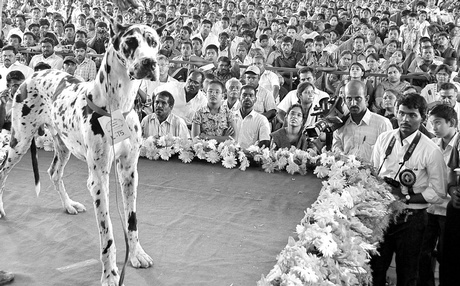
Sixteen-month-old gentle giant Jack, a Great Dane, hogged the limelight at the dog show on the second and final day of the Yelagiri Summer Festival 2013 on Sunday. The show, which turned out be a crowd puller, witnessed more than 15 different foreign breeds of dogs, besides the Kombai, a native breed.
Jack retained the overall championship, just like his father Apollo, who won the title last summer for its majestic look and traits. This harlequin Great Dane, one of the world’s tallest dog breeds, not only won the title but also brought moments of happiness and pride to its owner A Yuvaraj of Jolarpet.
“The calm characteristic of Great Dane that looks massive among other breeds of dogs has earned them the name of gentle giant,” said Yuvaraj holding the four and half-foot-tall (shoulder height) Jack with the trophy. His pet dogs have been winning the overall championship for the eighth consecutive year.
Yuvaraj engaged a professional trainer, T L Suresh Babu, to train the dog. Jack was calm and let out barks the minute its master yelled ‘Charge’. “It will never attack anyone until its master or trainer says ‘attack’. It is such an obedient animal. It will grow to the maximum height of 40 inches,” said Suresh.
Apart from the Great Dane, foreign breeds such as Golden Retriever, Neapolitan Bull Mastiff, Dulmison, Siberian Husky, Boston Terrier, Irish Setter, Doberman, Basset Hound, Labrador Retriever, French Bull Dog, Pomeranian and Miniature Doberman also featured in the show. “A total of 60 dogs have been brought to the show. Boston Terrier, French Bull Dog and Siberian Husky are unique breeds and for the first time they are participating in the show,” Additional Director of Animal Husbandary, Ranipet Circle, Dr T Manoharan, said. He hosted the show and provided interesting information about the origin of the foreign breed dogs to the spectators. Among the native breeds, only the Kombai was present.
Next year, the department would take initiative to bring more native breeds such as Kanni, Sippiparai, Rajapalayam and other breeds, which are on the verge of extinction, to the show.
R Nithyanandam of Vellore is the proud owner of a Boston Terrier that won the special first prize in the small dogs category at the festival. This breed of dog originated from America and is nicknamed ‘the American Gentleman’. “I have a pair of Boston Terriers. The male is imported from Thailand and is named Billu and the female is imported from Moscow and called Teena. I spent `2.25 lakh for the puppies,” said Nithyanandam.
He was the first person to import this breed, which is known for its intelligence and sniffing out explosives, he claimed.
The other interesting breed was the Siberian Husky, having its roots in the polar region and bearing a strong survival instinct. “One Babu from KGF brought the breed. It costs around Rs 3 lakh. This is the first time this breed has been brought to the show here,” said Manoharan.
Babu also brought the smallest breed, miniature Doberman. It is smallest next to the world’s tiniest breed of dog, the Chihuahua, which is from Mexico. S Kumar of Yelagiri paraded his two and half-year-old Dalmatian. It won the second prize in the medium category. He also brought an Irish Setter and a Golden Retriever.
source: http://www.newindianexpress.com / The New Indian Express / Home> States> Tamil Nadu / by J. Shanmuga Sundaram / ENS – Vellore / June 11th, 2013